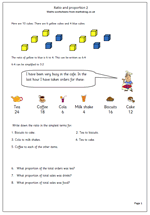Here we have a rather nice number investigation for Year 3. Using exactly 5 of the cards, how many ways can 12 be made?
It is probably a good idea to cut out the cards, or make your own, to make it much easier to move the numbers around to make the number sentences.
As with all investigations look out for a logical, well ordered method, although at the beginning most children will work in a random fashion (as will most adults.) Once it is clear that there are a number of 2-digit subtractions that can be done it is important to show them in some logical way so that it can be seen that all possible combinations have been covered.
Rules can be changed or adapted: one of the first questions which might come up is ‘Can I use the cards twice?’ In the case of adding three single digits the plus sign needs to be used twice, but children can make their own rules for this.








